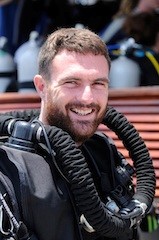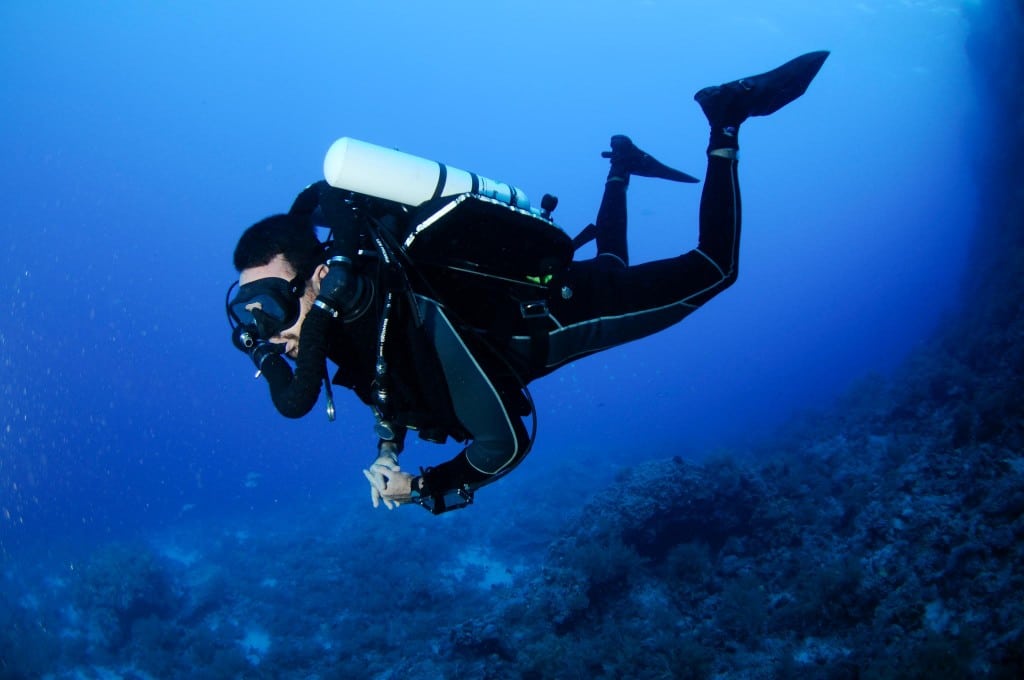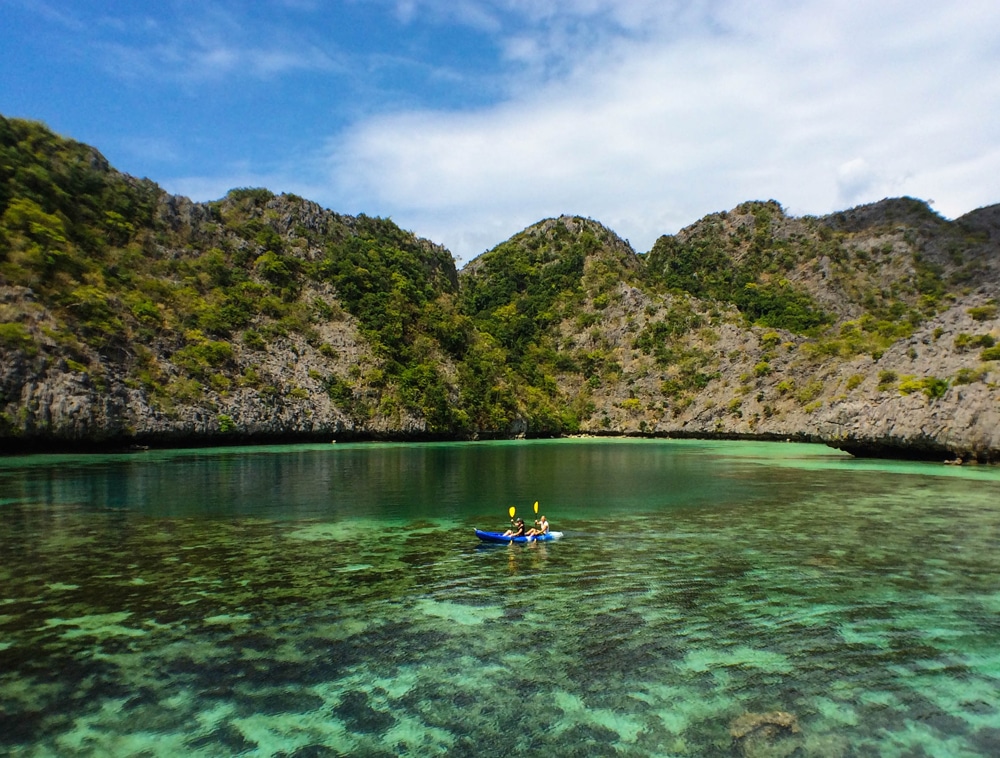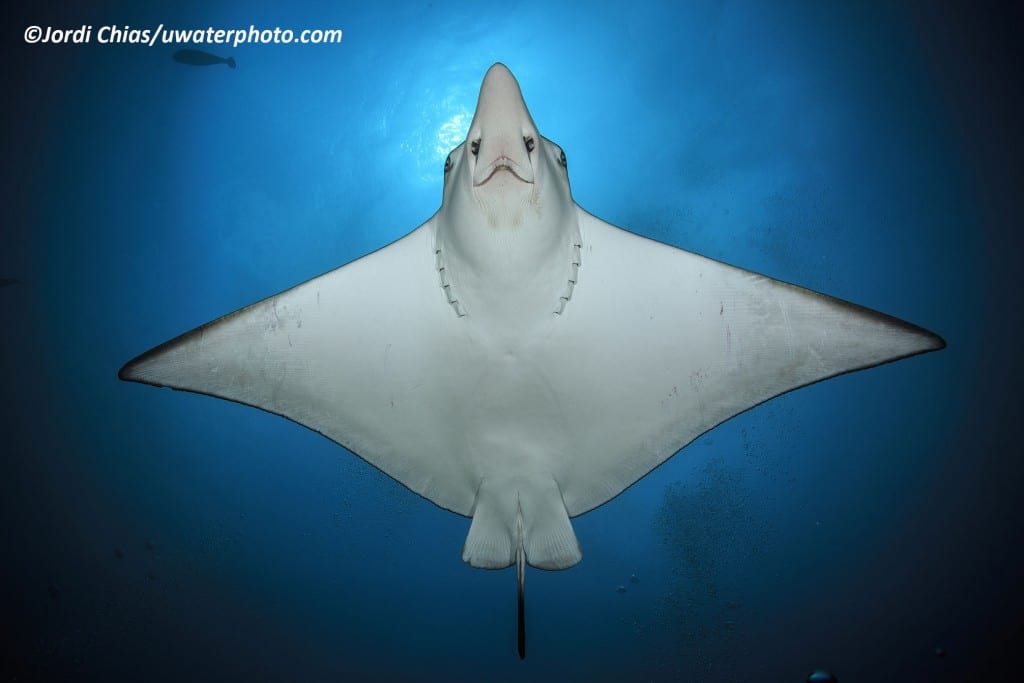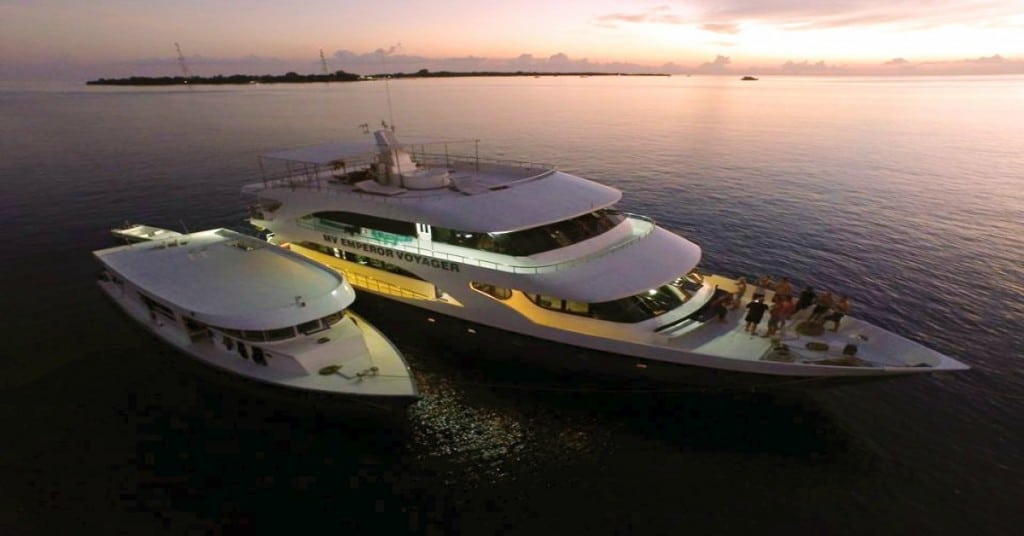News
Diving with… Alex Bryant, Emperor Divers – Red Sea, Maldives & Indonesia
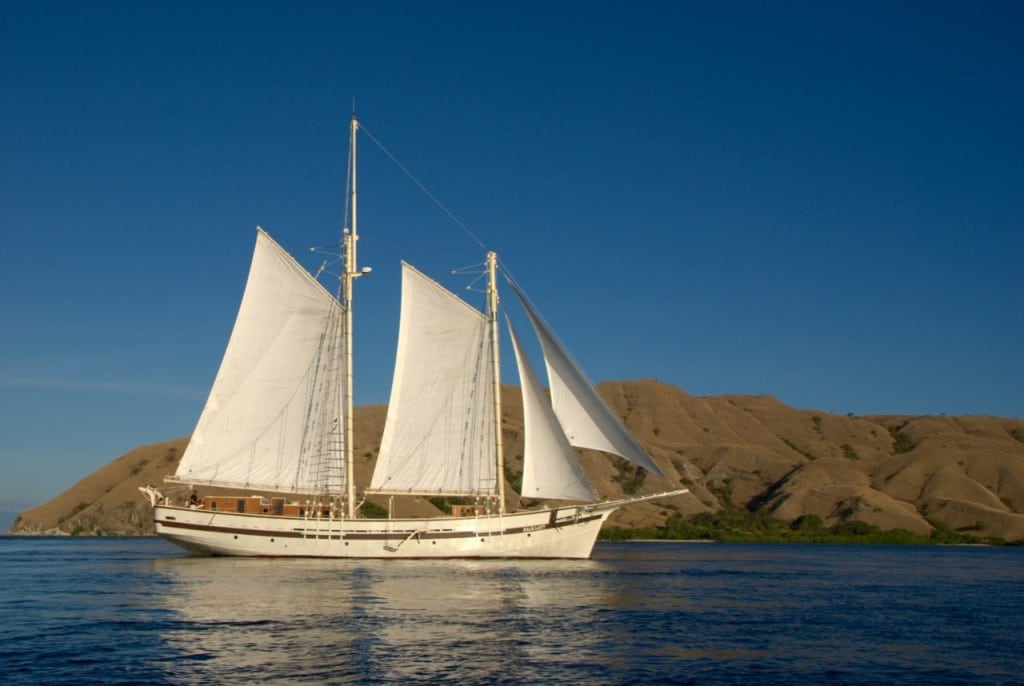
In this ongoing series, we speak with the people who run dive centres, resorts and liveaboards from around the world about their businesses and the diving they have to offer
Alex Bryant
What is the name of your business?
Emperor Divers
What is your role within the business?
Managing Director
How long has the business operated for?
25 years
How long have you dived for, and what qualification are you?
23 years. I am an Instructor Trainer.
What is your favourite type of diving?
I love channel dives with ripping currents in places like the Maldives and Komodo, Indonesia.
If you could tell people one thing about your business (or maybe more!) to make them want to visit you what would it be?
We operate a fleet of 11 magnificent liveaboards in three of the most popular diving destinations in the world; the Maldives, the Red Sea and Indonesia. Our team of experienced local and international crew and dive guides love their job, love working with us, and most importantly love diving with and serving our clients, many of whom have been diving with Emperor since we first began, over 25 years ago.
All members of the team respect and love the environment and the underwater world and want to share that passion with as many people as possible, making happy friends along the way. Nitrox is free on all our boats in the Maldives and the Red Sea, and we encourage everyone to use it for their safety.
What is your favourite dive in your location and why?
Fushi Kandu, Laamu, on the South Central and Deep South Southern Sharks itineraries. I love this channel dive especially as it’s like fish soup! The lip of the channel is relatively shallow and, rather than being a steep drop to the ocean, there is a sloping drop from about 12m down to a plateau at around 30m. This then stretches out about 20m or so to the ocean drop off.
This topography allows divers to easily jump on one corner of the channel, cross to the other, and then gently come shallower to 12ish meters, which allows for an extended dive time compared to the majority of channel dives in the Maldives. It helps that there is often a school of jacks on one corner and a school of barracuda on the other, with lots of meaty grey reef sharks in the middle of the channel and copious amounts of reef fish and fusiliers all enjoying a swim and occasional darting hunt. Fish soup of the kind you can happily enjoy.
What types of diving are available in your location?
Maldives: channel dives, manta cleaning stations, pinnacle dives, reef dives, manta night dives, whale shark snorkelling, whale sharks at night behind the boat, hammerhead blue dives, amazing night dives with sharks and rays.
Indonesia: muck diving, manta cleaning stations, hammerhead blue dives, best coral reefs in the world (it’s the centre of the Coral Triangle), whale sharks, reef dives, you name it Indonesia essentially has it all.
Red Sea: incredible visibility, wreck dives, reef dives, hammerhead dives, pinnacle dives, advanced diving, beginner diving, best value you can find anywhere!
What do you find most rewarding about your current role?
I love travelling the world meeting divers from varying cultures, promoting our products whilst also encouraging conservation, good, fun and safe diving practices whilst attending dive shows around the world. I am heavily involved in product development; looking for new boats, new destinations and new markets. Projects that develop into products that make clients happy and wanting to return make me equally as happy.
What is your favourite underwater creature?
The manta ray. I have done thousands of dives in the Maldives and Indonesia with these beautiful, majestic, huge creatures and I will never grow tired of watching them glide effortlessly around a cleaning station in a ripping current.
Are there any exciting changes / developments coming up in the near future?
We are always working on new products and new ideas; opportunities are everywhere so time will tell. People will just have to keep checking the website, press releases, social media and blogs to find out when they happen.
As a centre what is the biggest problem you face at the moment?
My personal pet hate is plastic. It’s the biggest problem everyone faces, yet very few people realise it yet.
I first became aware of it when the Plastic Oceans team chartered one of our boats to go to Sri Lanka to film the blue whales in 2011 and I was driving the rib for the film crew. It was an incredible experience for me to be using my knowledge of animal behaviour from years as a dive guide to be able to position the film crew close enough to film but in a manner that did not disturb the whales so they would stay around the surface to be filmed. However, the things I learnt from the team, especially Craig Leeson, about the state of the plastic crisis were extremely disturbing. I would strongly encourage anyone who hasn’t yet watched it to watch Plastic Oceans now.
Is your centre involved in any environmental work?
I am personally involved with Sea Save Foundation, which works with CITES for the protection of our environment. We donate prizes for fund raising for SEA Save and a number of other environmental initiatives. We have also worked closely with IUCN in the Maldives, where they have done expeditions on our boats in the Maldives as well as the University of Queensland, Global Change Institute where my brother is a Marine Biologist.
On a more local level, we took the step in 2012 to switch from having single-use plastic water bottles on the boats to giving people refillable gym-style water bottles, which guests can also take home as a souvenir from their trip. We are constantly looking at ways to reduce our carbon footprint and, even more so, ways to reduce the amount of plastic waste from our operations.
How do you see the SCUBA / Freediving / snorkeling industry overall? What changes would you make?
I am encouraged by the number of new cultures and nationalities coming into the SCUBA and marine industry/environments as I feel it is a wonderful opportunity for us to help educate more of the world of the importance of respecting the ocean; the valuable part the oceans play in maintaining and controlling our eco-system and also to educate and assist each other to be more tolerant and understanding of one another. To appreciate the differences, whilst forming bonds that allow us to protect and restore our natural world.
I would love to see more young people coming into SCUBA as I believe the power and passion of the future generations in understanding and believing in what we do will be pivotal in the sustained development of, not only our industry, but our environment too.
What would you say to our visitors to promote the diving you have to offer?
We operate in some of the best value-for-money and easy-to-access diving destinations in the world. You will not find better locations for the money than the Red Sea, the Maldives and Indonesia with Emperor Divers.
The Red Sea has some of the best visibility and colourful hard corals in the world, the Maldives has some of the best manta action and fish-filled dive sites in the world and Indonesia has a bit of everything whilst being the most bio-diverse underwater environment on earth at the centre of the Coral Triangle.
Where can our visitors find out more about your business?
 You can visit our websites:
You can visit our websites:
Email me at: alex@emperormaldives.com
or visit our Facebook pages:
Blogs
Northern Red Sea Reefs and Wrecks Trip Report, Part 3: The Mighty Thistlegorm

Jake Davies boards Ghazala Explorer for an unforgettable Red Sea diving experience…
Overnight, the wind picked up, making the planned morning dive a bit bumpy on the Zodiacs to the drop point on Thomas Reef. There, we would dive along the reef before descending through the canyon and then passing under the arch before ascending the wall with a gentle drift. The site provided great encounters with more pelagic species, including shoals of large barracuda, tuna, and bigeye trevally.
Once back on the boat, it was time to get everything tied down again as we would head back south. This time, with the wind behind us, heading to Ras Mohammed to dive Jackfish Alley for another great gentle drift wall dive before then heading up the coast towards the Gulf of Suez to moor up at the wreck of the Thistlegorm. This being the highlight wreck dive of the trip and for many onboard, including myself, it was the first time diving this iconic wreck. I had heard so much about the wreck from friends, and globally, this is a must on any diver’s list. Fortunately for us, there was only one other boat at the site, which was a rarity. A great briefing was delivered by Ahmed, who provided a detailed background about the wreck’s history along with all the required safety information as the currents and visibility at the site can be variable.

Kitting up, there was a lot of excitement on deck before entering the water and heading down the shoreline. Descending to the wreck, there was a light northerly current which reduced the visibility, making it feel more like the conditions that can be found off the Welsh coast. At 10m from the bottom, the outline of the wreck appeared as we reached the area of the wreck which had been bombed, as our mooring line was attached to part of the propeller shaft. Arriving on deck, instantly everywhere you looked there were many of the supplies which the ship was carrying, including Bren Carrier tanks and projectiles that instantly stood out.

We headed around the exterior, taking a look at the large propeller and guns mounted on deck before entering the wreck on the port side to take a look in the holds. It was incredible to see all the trucks, Norton 16H, and BSA motorcycles still perfectly stacked within, providing a real snapshot in time.

Overall, we had four dives on the Thistlegorm, where for all of the dives we were the only group in the water, and at times, there were just three of us on the whole wreck, which made it even more special, especially knowing that most days the wreck has hundreds of divers. Along with the history of the wreck, there was plenty of marine life on the wreck and around, from big green turtles to batfish, along with shoals of mackerel being hunted by trevally. Some unforgettable dives.

The final leg of the trip saw us cross back over the Suez Canal to the Gobal Islands where we planned to stay the night and do three dives at the Dolphin House for the potential of sharing the dive with dolphins. The site, which included a channel that was teeming with reef fish, especially large numbers of goatfish that swam in large shoals along the edge of the reef. These were nice relaxing dives to end the week. Unfortunately, the dolphins didn’t show up, which was okay as like all marine life they are difficult to predict and you can’t guarantee what’s going to be seen. With the last dive complete, we headed back to port for the final night where it was time to clean all the kit and pack before the departure flight the next day.

The whole week from start to finish on Ghazala Explorer was amazing; the boat had all the facilities you need for a comfortable week aboard. The crew were always there to help throughout the day and the chefs providing top quality food which was required after every dive. The itinerary providing some of the best diving with a nice mixture of wreck and reef dives. I would recommend the trip to anyone, whether it’s your first Red Sea liveaboard in the Red Sea or you’re revisiting. Hopefully, it’s not too long before I head back to explore more of the Red Sea onboard Ghazala Explorer.

To find out more about the Northern Red Sea reef and wrecks itineraries aboard Ghazala Explorer, or to book, contact Scuba Travel now:
Email: dive@scubatravel.com
Tel: +44 (0)1483 411590
Photos: Jake Davies / Avalon.Red
Blogs
Northern Red Sea Reefs and Wrecks Trip Report, Part 2: Wall to Wall Wrecks

Jake Davies boards Ghazala Explorer for an unforgettable Red Sea diving experience…
The second day’s diving was a day full of wreck diving at Abu Nuhas, which included the Chrisoula K, Carnatic, and Ghiannis D. The first dive of the day was onto the Chrisoula K, also known as the wreck of tiles. The 98m vessel remains largely intact where she was loaded with tiles which can be seen throughout the hold. The stern sits at 26m and the bow just below the surface. One of the highlights of the wreck is heading inside and seeing the workroom where the machinery used for cutting the tiles are perfectly intact. The bow provided some relaxing scenery as the bright sunlight highlighted the colours of the soft coral reef and the many reef fish.

Following breakfast, we then headed to the next wreck, which was the Carnatic. The Carnatic is an 89.9m sail steamer vessel that was built in Britain back in 1862. She ran aground on the reef back in 1869 and remains at 27m. At the time, she was carrying a range of items, including 40,000 sterling in gold. An impressive wreck where much of the superstructure remains, and the two large masts lay on the seafloor. The wooden ribs of the hull provide structures for lots of soft corals, and into the stern section, the light beams through, bouncing off the large shoals of glass fish that can be found using the structure as shelter from the larger predators that are found outside of the wreck.

The final wreck at Abu Nuhas was the Ghiannis D, originally called ‘Shoyo Maru,’ which was 99.5m long and built in Japan back in 1969 before becoming a Greek-registered cargo ship in 1980. The ship then ran aground on the reef on April 19th, 1983, and now sits at the bottom at a depth of 27m. Heading down the line, the stern of the ship remains in good condition compared to the rest of the hull. The highlight of the wreck, though, is heading into the stern section and down the flights of stairs to enter the engine room, which remains in good condition and is definitely worth exploring. After exploring the interior section of the ship, we then headed over to see the rest of the superstructure, where it’s particularly interesting to see the large table corals that have grown at the bow relatively quickly considering the date the ship sank. After surfacing and enjoying some afternoon snacks, we made sure everything was strapped down and secured as we would be heading north and crossing the Gulf of Suez, where the winds were still creating plenty of chop.

The next morning, it was a short hop to Ras Mohammed Nature Reserve for the next couple of days of diving. The 6am wake-up call came along with the briefing for the first site we would be diving, which was Shark & Yolanda. The low current conditions allowed us to start the dive at Anemone City, where we would drift along the steep, coral-filled wall. These dives involved drifts, as mooring in Ras Mohammed wasn’t allowed to protect the reefs. As a dive site, Shark & Yolanda is well-known and historically had a lot of sharks, but unfortunately not so many in recent years, especially not so early in the season. However, there was always a chance when looking out into the blue.

The gentle drift took us along the steep walls of the site, with plenty of anemone fish to be seen and a huge variety of corals. It wasn’t long into the dive before we were accompanied by a hawksbill turtle, who drifted with us between the two atolls before parting ways. Between the two reefs, the shallow patch with parts of coral heads surrounded by sand provided the chance to see a few blue-spotted stingrays that were mainly resting underneath the corals and are always a pleasure to see. With this being the morning dive, the early sunlight lit up the walls, providing tranquil moments. Looking out into the blue, there was very little to be seen, but a small shoal of batfish shimmering underneath the sunlight was a moment to capture as we watched them swim by as they watched us.

Towards the end of the dive, we stopped at the wreck of the Jolanda where the seafloor was scattered with toilets from the containers it was carrying. This provided a unique site to make a safety stop, which was also accompanied by a large barracuda slowly swimming by, along with a hawksbill turtle calmly swimming over the reef as the sun rays danced in the distance.
For the next dive, we headed north to the Strait of Tiran to explore the reefs situated between Tiran Island and Sharm El Sheik, which were named after the British divers who had found them. We started on Jackson before heading to Gordons Reef, where we also did the night dive. All the atolls at these sites provided stunning, bustling coral reefs close to the surface and steep walls to swim along, which always provided the opportunity to keep an eye out for some of the larger species that can be seen in the blue. Midwater around Jackson Reef was filled with red-toothed triggerfish and shoals of banner fish, which at times were so dense that you couldn’t see into the blue. Moments went by peacefully as we enjoyed the slow drift above the reef, watching these shoals swim around under the mid-afternoon sun.

The night dive at Gordon’s Reef was mainly among the stacks of corals surrounded by sand, which was great to explore under the darkness. After some time circling the corals, we came across what we were really hoping to find, and that was an octopus hunting on the reef. We spent the majority of the dive just watching it crawl among the reef, blending into its changing surroundings through changes in colour and skin texture. It’s always so fascinating and captivating to watch these incredibly intelligent animals, in awe of their ability to carry out these physical changes to perfectly blend into the reef. Before we knew it, it was time to head back to the boat to enjoy a well-deserved tasty dinner prepared by the talented chefs onboard.
Check in for the 3rd and final part of this series from Jake tomorrow!
To find out more about the Northern Red Sea reef and wrecks itineraries aboard Ghazala Explorer, or to book, contact Scuba Travel now:
Email: dive@scubatravel.com
Tel: +44 (0)1483 411590
Photos: Jake Davies / Avalon.Red
-

 News3 months ago
News3 months agoHone your underwater photography skills with Alphamarine Photography at Red Sea Diving Safari in March
-

 News3 months ago
News3 months agoCapturing Critters in Lembeh Underwater Photography Workshop 2024: Event Roundup
-

 Marine Life & Conservation Blogs2 months ago
Marine Life & Conservation Blogs2 months agoCreature Feature: Swell Sharks
-

 Blogs2 months ago
Blogs2 months agoMurex Resorts: Passport to Paradise!
-

 Blogs2 months ago
Blogs2 months agoDiver Discovering Whale Skeletons Beneath Ice Judged World’s Best Underwater Photograph
-

 Gear Reviews3 months ago
Gear Reviews3 months agoGear Review: Oceanic+ Dive Housing for iPhone
-

 Marine Life & Conservation2 months ago
Marine Life & Conservation2 months agoSave the Manatee Club launches brand new webcams at Silver Springs State Park, Florida
-

 News3 months ago
News3 months agoWorld’s Best Underwater Photographers Unveil Breathtaking Images at World Shootout 2023


